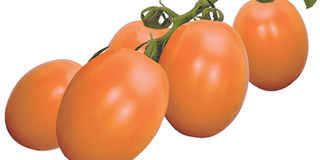The GMO riddle

In order to boost the nutritional content of red tomatoes, a scientific team at the John Innes Centre in Norwich, UK, produced purple tomatoes by inserting a gene from the snapdragon flower.
Genetic engineering is the manipulation of DNA, the blueprint of cell development and function that is encoded in our cells, to produce genetically modified organisms (GMOs).
It has gained negative publicity, conjuring images in our minds of bespectacled mad scientists in Frankenstein-like laboratories, where they meddle with Mother Nature to create a new organism that may negatively affect nature’s equilibrium.
While the responsible conducting of scientific procedures has to be rigorously regulated and upheld, and as research on the wider long-term effects of genetically engineered plants on biodiversity continues, the general public remains ill at ease with the genetic manipulation of plants for ingestion. Suffice to say that the widely accepted form of human ‘interference’ on plant production is grafting.
A number of vegetables that we eat today are as a result of this ‘crude’ manipulation in the outdoors, as opposed to in high-tech scientific laboratories. Many wild varieties of vegetables were historically manipulated to boost production well before our time.
This practice continues in the present day in the thriving horticulture industry, where, for example, creative manipulations are used to produce unusual rose petal colours and thorn-free stems that are required to lure buyers, both locally and (particularly) overseas.
Carrots have been part of the human diet for at least 5,000 years. Early studies have shown that carrots were once a variety of colours — purple, white, red, yellow, green and black — anything but orange. The carrot’s orange colour came about in the 1500s, when patriotic Dutch growers cross-bred the red variety with the mutant yellow carrot variety from North Africa.
The orange pigment in carrots is attributed to betacarotene, which is a precursor of vitamin A. Once converted by enzymes in the body, vitamin A has a wide range of roles in our bodies, including colour and night vision, reproduction, and formation of blood cells in the bone marrow.
The origins of purple carrots have been traced to Afghanistan and are now making a comeback. In addition to their nutritional content, they make for an interesting presentation for dinner guests as well as entice children, who may require persuading to eat their vegetables.
The purple pigment is also found in a number of vegetables including beet root, purple broccoli, aubergine (also known as egg plant), red cabbage, purple bell peppers (also known as capsicum), as well as fruit such as blueberries and in the skin of purple grapes.
The pigment is attributed to anthocyanin, which belongs to the chemical grouping of flavonoids, that are renowned for their antioxidant properties. In other words, they ‘mop up’ free radicals which are harmful by-products of functioning cells which, if left unchecked, may lead to a number of diseases such as cancer.
Following promising findings in studies conducted in rodent tissue, a study is underway to investigate the value of anthocyanins derived from berries in humans. In order to boost the nutritional content of red tomatoes, a scientific team at the John Innes Centre in Norwich, UK, produced purple tomatoes, by inserting a gene from the snapdragon flower.
The anthocyanins accumulated in both the flesh and skin of the tomatoes, producing intense purple coloured tomatoes with purple tomato juice. Subsequent studies conducted in mice that were fed with purple tomatoes lived longer, suggesting the additional health benefits of purple tomatoes.
It must be emphasized, however, that animal studies do not necessarily translate to the human experience, although they do point towards interesting possibilities. More importantly, the engineering of foods remains a topical issue of debate as we, the potential consumers, need to make an informed decision on what we ingest.




